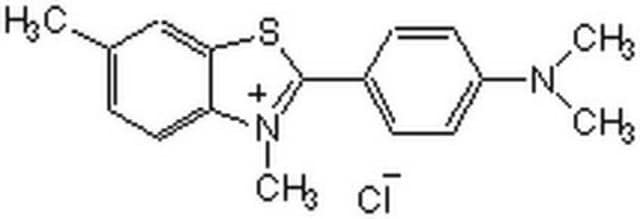All Photos(1)
About This Item
Empirical Formula (Hill Notation):
C194H296N54O57S1
Molecular Weight:
4328.82
UNSPSC Code:
12352209
NACRES:
NA.77
Recommended Products
Assay
≥95% (HPLC)
form
lyophilized
composition
Peptide Content, ≥70%
storage condition
protect from light
storage temp.
−20°C
Amino Acid Sequence
Asp-Ala-Glu-Phe-Arg-His-Asp-Ser-Gly-Tyr-Glu-Val-His-His-Gln-Lys-Leu-Val-Phe-Phe-Ala-Gln-Asp-Val-Gly-Ser-Asn-Lys-Gly-Ala-Ile-Ile-Gly-Leu-Met-Val-Gly-Gly-Val-Val
Application
Amyloid β (Aβ) refers to peptides derived from Amyloid precursor protein that vary in length from 36-43 amino acids. Aβ(s) peptides, their peptide fragments and mutated fragments are used to study a wide range of metabolic and regulatory functions including activation of kinases, regulation of cholesterol transport, function as a transcription factor, and regulators of inflammation. Aβ(s) peptides and their peptide fragments are also used to study oxidative stress, metal binding and mechanisms of protein cross-linking in the context of diseases such as Alzheimer′s disease and neurodegeneration.
Storage Class Code
11 - Combustible Solids
WGK
WGK 3
Flash Point(F)
Not applicable
Flash Point(C)
Not applicable
Certificates of Analysis (COA)
Search for Certificates of Analysis (COA) by entering the products Lot/Batch Number. Lot and Batch Numbers can be found on a product’s label following the words ‘Lot’ or ‘Batch’.
Already Own This Product?
Find documentation for the products that you have recently purchased in the Document Library.
Régis Blaise et al.
Aging cell, 11(3), 384-393 (2012-01-21)
Cerebral amyloid angiopathy (CAA) is an important cause of intracerebral hemorrhages in the elderly, characterized by amyloid-β (Aβ) peptide accumulating in central nervous system blood vessels. Within the vessel walls, Aβ-peptide deposits [composed mainly of wild-type (WT) Aβ(1-40) peptide in
Olujide O Olubiyi et al.
The journal of physical chemistry. B, 116(10), 3280-3291 (2012-02-04)
In this simulation study, we present a comparison of the secondary structure of the two major alloforms of the Alzheimer's peptide (Aβ(1-40) and Aβ(1-42)) on the basis of molecular dynamics (MD) simulations on thea microsecond time scale using the two
Hye Jung Kim et al.
Journal of neurochemistry, 121(2), 228-238 (2012-02-23)
Amyloid β-protein (Aβ) deposits in brains of Alzheimer's disease patients generate proinflammatory cytokines and chemokines that recruit microglial cells to phagocytose Aβ. Nucleotides released from apoptotic cells activate P2Y(2) receptors (P2Y(2) Rs) in macrophages to promote clearance of dead cells.
Masakazu Hashimoto et al.
Journal of neuroscience methods, 205(2), 364-367 (2012-02-14)
Several lines of evidence suggest that aggregation of the amyloid β-peptide (Aβ) in the brain is a trigger of Alzheimer's disease (AD). Thus, quantification of Aβ in several different types of samples from brain is fundamental for understanding AD pathogenesis.
Our team of scientists has experience in all areas of research including Life Science, Material Science, Chemical Synthesis, Chromatography, Analytical and many others.
Contact Technical Service





![[Gly22]-Amyloid β 1-42 Arctic human](/deepweb/assets/sigmaaldrich/product/images/222/254/58bfa018-4218-48a8-957d-f4d67366a533/640/58bfa018-4218-48a8-957d-f4d67366a533.jpg)